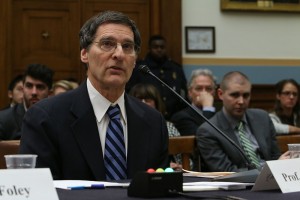By a 4-4 vote, a short-handed U.S. Supreme Court today let stand a lower court’s 2-1 decision to block President Barack Obama’s executive actions on immigration. The decision is “deeply regrettable,” said a noted expert on immigration law at Washington University in St. Louis.

The effect of the Supreme Court’s split decision is to affirm the judgment of the Court of Appeals for the Fifth Circuit. A panel of that court, in a 2-1 decision, had prohibited the Obama Administration from implementing its November deferred action announcement anywhere in the United States.
The Supreme Court’s action has several harmful consequences, said Stephen Legomsky, the John S. Lehmann University Professor Emeritus.
Legomsky has served as chief counsel of the federal immigration agency that decides applications for various immigration statuses and benefits. He is also the principal author of the immigration law text that has been required at 185 law schools. His most recent congressional testimony provides a detailed explanation of the main issues in the case.
“The court’s decision allows two exceptionally conservative judges who sit on one regional court, of the plaintiffs’ choosing, to substitute their personal policy preferences for those of a democratically elected president,” Legomsky said. “This alone illustrates the pressing need for the Senate to fulfill its constitutional duty to act on the president’s Supreme Court nominations and restore the Court to full strength.”
In November, the Obama administration had announced a program that would allow certain undocumented immigrants – mainly those who had lived here many years and have U.S. citizen children – to apply for a decades-old remedy called “deferred action.” This remedy allows certain individuals to remain in the country temporarily and, during that period, to support themselves by working, Legomsky said.
A coalition of 26 Republican governors and attorneys general, led by Texas, sued the federal government. They argued that the federal immigration laws don’t authorize these policies. They also argued that the administration should have used a more formal procedure to announce them.
“Combined with Congress’s failure to act on immigration reform, the court’s action creates a long-term legal limbo for millions of immigrants who have lived peacefully and productively in the United States for many years,” Legomsky said.
“Although the court’s one-sentence announcement does not reveal the votes of the individual justices, it is nearly certain from the oral argument that Chief Justice John Roberts was one of the four Republican appointees who voted for Texas’s position,” Legomsky said. “To do so, he had to go against his own strongly-held views just to hold that Texas even has the legal standing to bring this lawsuit. This shows how intensely partisan the Court has become.”
“Because a 4-4 split supplies no guidance, it leaves everyone uncertain as to whether these sorts of executive actions – used by every president in recent decades – are now suddenly illegal,” he said.